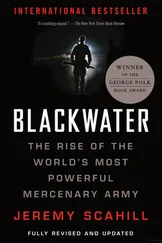By December, the United States had developed a strategy to partner with the Ethiopian military and Somalia’s government in exile to drive the Courts from Mogadishu. The plan was to install the weak, but official, Somali government, which would be secured by Ethiopian-trained Somali forces and the Ethiopian military. As for the ICU leaders and foreign fighters, Task Force 88, based out of Manda Bay, would develop a plan to hunt them down and kill them.
On December 4, 2006, CENTCOM commander general John Abizaid touched down in Addis Ababa for a meeting with Prime Minister Meles Zenawi. Officially, it was a routine visit with a US ally. Behind the scenes, it was clear that war was imminent. “We saw what was happening as the chance of a lifetime,” a Pentagon officer told Time magazine, “a very rare opportunity for the U.S. to move directly against al-Qaeda and get these terrorists.”
Days after Abizaid’s meeting in Ethiopia, the US State Department significantly escalated its rhetoric and began publicly characterizing the ICU as an al Qaeda front. “The Council of Islamic Courts is now controlled by Al-Qaeda cell individuals, East Africa Al-Qaeda cell individuals,” declared Jendayi Frazer, US assistant secretary of state for African affairs and the top US official on Africa. “The top layer of the courts are extremist to the core. They are terrorists and they are in control.” Much like the buildup to the 2003 Iraq invasion, major US media outlets began hyping the al Qaeda connection, printing the views of anonymous US officials as verified facts. Sensational headlines began appearing, warning of a “Growing Al-Qaeda Menace in Africa.” Corporate TV reporters breathlessly offered up revisionist history of the Somalia conflict, conveniently omitting the US role in creating the crisis. On CBS, veteran correspondent David Martin declared, “Somalia has been a safe haven for Al-Qaeda ever since the U.S. military pulled out of the country following the infamous Black Hawk Down firefight.” CNN’s Pentagon correspondent Barbara Starr practically sounded like a Bush administration spokesperson: “Today, here in East Africa, the concern remains that unless Somalia is shut down as a terrorist safe haven, the threat of another attack remains very real.”
While the Bush administration and some prominent media outlets hyped the Somali threat, not everyone was playing along. Even as the US military prepared for direct action, the director of national intelligence, John Negroponte, expressed skepticism about claims the Courts were run by al Qaeda. “I don’t think there are hard and fast views,” Negroponte said. Somalia “has come back on the radar screen only fairly recently,” he observed, adding that the key question was whether the ICU “is the next Taliban.” He concluded, “I don’t think I’ve seen a good answer.” John Prendergast, who served as an Africa specialist in the Clinton administration’s NSC and State Department, labeled the Bush administration’s Somalia policy “idiotic,” charging that backing an Ethiopian invasion would make “our counterterrorism agenda nearly impossible to implement.”
Then-Senator Joe Biden, who at the time was preparing to take over the chairmanship of the Foreign Relations Committee, spoke out forcefully and displayed a keen historical knowledge of the timeline of events leading up to the ICU coming to power. “By making a bad bet on the warlords to do our bidding,” Biden charged, “the administration has managed to strengthen the Courts, weaken our position and leave no good options. This is one of the least-known but most dangerous developments in the world, and the administration lacks a credible strategy to deal with it.”
Credible strategy or not, the administration had committed itself to taking down the Courts.
On December 24, 2006, Ethiopian warplanes began bombing runs, as tanks rolled across the Somali border. It was a classic proxy war run by Washington and staffed by 40,000–50,000 troops from Somalia’s widely despised neighbor. The ICU’s defense minister, Indha Adde, held a press conference and publicly invited foreign Islamists to come fight. “Let them fight in Somalia and wage jihad, and, God willing, attack Addis Ababa,” he said.
As fighter jets bombarded Somalia and Ethiopian forces made their way toward Mogadishu, Frazer and other US officials denied Washington was behind the invasion. The claims were demonstrably false. “The US sponsored the Ethiopian invasion, paying for everything, including the gas that it had to expend, to undertake this. And you also had US forces on the ground, US Special Operations forces. You had CIA on the ground. US airpower was a part of the story as well. All of which gave massive military superiority to the Ethiopians,” said Gartenstein-Ross. “The Ethiopians were not able to come in without the support of the US Government,” recalled Gedi, who was then the prime minister in exile and worked with US intelligence and the Ethiopian government in planning the invasion. “American air forces were supporting us.”
Qanyare watched while the Ethiopians replaced his CIA-backed alliance as Washington’s newest proxy. To him, it was an incalculable disaster. The “international community brought [the Ethiopians], in the pretext of that they are fighting with al Qaeda,” Qanyare alleged. “They kill the people, because of a grudge of the 1977 war. They finish the people, and they kill the women and children. Elimination. Under the pretext that they are fighting al Qaeda. I should believe if America knew their character, they’d never call them.”
By New Year’s Day, exiled prime minister Gedi was installed in Mogadishu. “The warlord era in Somalia is now over,” he declared. In a sign of what was to come, demonstrations broke out against the forces that had installed him as people swiftly and angrily began to denounce the Ethiopian “occupation.” The events of 2007 would send Somalia on a trajectory toward more horror and chaos, leading to a stunning rise in strength and size of the very forces Washington sought to combat. “Ethiopia and Somalia were archenemies, historical enemies, and people felt that this was adding insult to the injury,” said Aynte. “An insurgency was born out of there.”
“If there’s one lesson in terms of military operations of the past ten years, it’s that the US is a very effective insurgent force,” said Gartenstein-Ross. “In areas where it’s seeking to overthrow a government, it’s good at doing that. What it’s not shown any luck in doing is establishing a viable government structure.” The US and Ethiopian actions, Buubaa, the former foreign minister, said, would end up “driving Somalia into the al Qaeda fold.”
Nance, the veteran intelligence operative, agreed that the US-backed Ethiopian invasion was a boon for al Shabab: “The Shabab existed in a very small warlord-like infrastructure, prior to that, but once Ethiopia went in there—it’s pretty obvious that they were acting as a [US] surrogate—al Qaeda said, ‘Great! New full-on Jihadi battlefront. We’ve got ’em here. We’ve got the Christian Ethiopians, we’ve got American advisers. Now we just create a new battlefront and we will reinvigorate East Africa’s al Qaeda organization.’ And that is exactly what happened.”

20. Prison Break
YEMEN, 2006—While the CIA’s warlords were battling the Islamic Courts Union in Somalia and the Bush administration was almost singularly focused on the mounting insurgency in Iraq, a mass prison break in Sana’a occurred that would prove to be a seminal event in the reconstruction of al Qaeda in the region. Among those who escaped were several key figures who would go on to form the nexus of the leadership of a new organization, al Qaeda in the Arabian Peninsula (AQAP), including Nasir al Wuhayshi, bin Laden’s former personal secretary. On February 3, 2006, Wuhayshi and twenty-two others escaped from their maximum security prison by tunneling out of a cell into a nearby mosque, though Wuhayshi later boasted that they performed morning prayers before literally walking out the front door. Wuhayshi would unite the Saudi and Yemeni branches of al Qaeda under the regional banner of AQAP. Qasim al Rimi, who escaped in the same breakout, would go on to become AQAP’s military commander. “It is a serious problem,” Rumsfeld said a few days after the prison break. “They were individuals who were deeply involved in al Qaeda activities and directly connected to the attack on the USS Cole and the death of the sailors that were on board that ship.” But while Rumsfeld and other US officials focused almost exclusively on pressing Yemeni president Ali Abdullah Saleh to recapture Jamal al Badawi, whom the United States wanted to be extradited, and other Cole bombing suspects, it would be Wuhayshi and Rimi who would become the most notorious and problematic of the escapees.
Читать дальше













